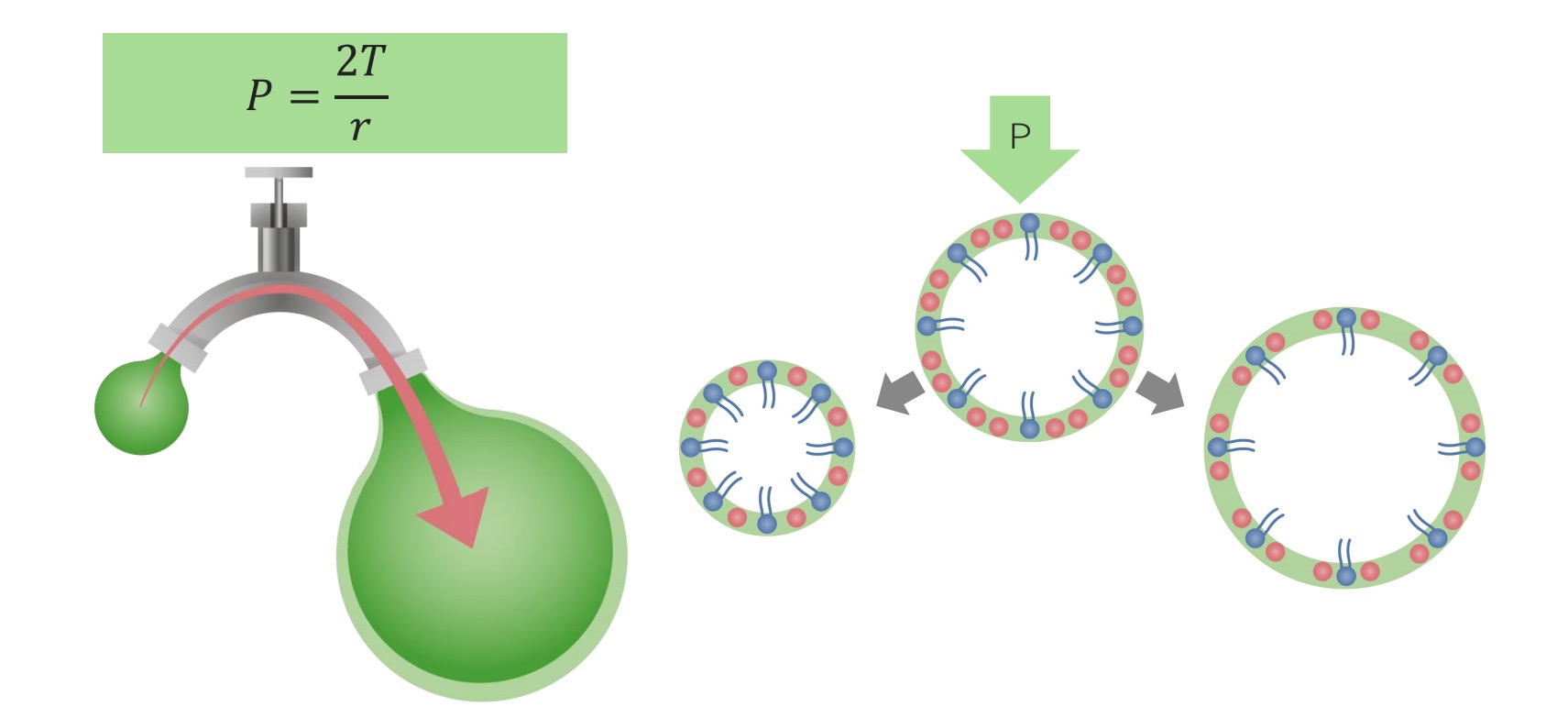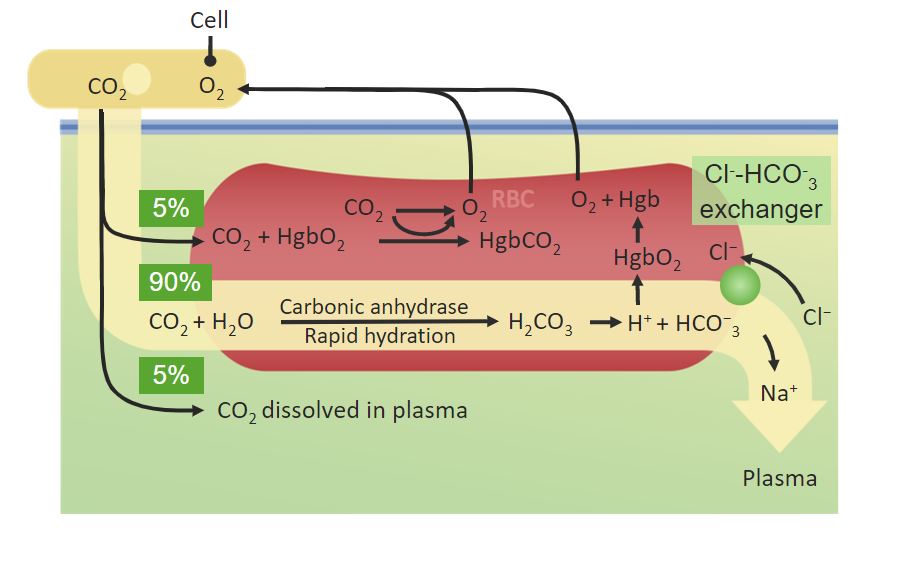Playlist
Show Playlist
Hide Playlist
Engineering Control Systems Approach – Control & Regulation of Breathing
-
Slides 05 PulmonaryControlRegulation RespiratorySystem.pdf
-
Download Lecture Overview
00:00 If we kind of integrate all of the various receptors that we have, let’s start with this. 00:06 We have central chemoreceptors and they are responsive to hydrogen ions. 00:10 We start with central chemoreceptors because they are the primary drive for us to breathe. 00:16 In fact it is kind of interesting that we breathe because we have too much CO2 in the system and hydrogen ions, not because we need oxygen on regular basis. 00:27 But this sends feedback to the respiratory control to start one to breathe. 00:33 We also have peripheral chemoreceptors. 00:35 These are much more responsive. 00:36 They’re responsive to both oxygen, carbon dioxide and hydrogen ions. 00:41 We have pulmonary stretch receptors and we have these various receptors that are located in the joints and muscles and these sense stretch and tension. 00:52 Now, what does the respiratory control center do with all of these information? Well, the biggest signal is it needs to signal the diaphragm and the external intercostals and accessory muscles so that you can inspire or breathe in. 01:06 Other control factors to the internal intercostals and abdominal muscles for you to breath out or expire. 01:14 This is this whole system of having the sensor. 01:18 This particular place in the respiratory control center that compares and integrates all this information and then does an effector type of response. 01:28 So in the pons, we have something known as the pneumotaxic center. 01:32 We also have the apneustic center and the pre-Bötzinger complex, the dorsal respiratory group neurons that are very important for inspiration. 01:43 And then the ventral group neurons that are important for forced expiration. 01:50 The medulla control centers, the dorsal respiratory group neurons are going to be the primary instigators for us to breathe in. 01:58 And this sets a general rhythm and frequency of inspiration. 02:04 That feedback is sent to the diaphragm and the diaphragm contracts, pulling on the alveoli because they are mechanically tethered so they decrease the amount of pressure and air can flow in. 02:18 There are also these neurons in the dorsal respiratory group that have an intrinsic oscillator in them. 02:24 And what this means is they start with a low frequency and gradually build and build and build and build and build until it reaches a threshold and sends information via the phrenic nerve to the inspiratory muscles. 02:41 The dorsal respiratory group neurons also receive feedback from many of the sensor that we’ve already talked about. 02:48 And the ventral group respiratory neurons are primarily engaged during forced expiration. 02:54 And so that is a forced breathing out type of maneuver. 03:03 Now, these apneustic and pneumotaxic centers. 03:06 Initially, they thought these were going to be very important for the control and regulation of breathing. 03:12 But now, we know them more as simply accessory centers that will be involved with certain types of breathing. 03:20 For example the pneumotaxic center helps to abate or limit tidal volume when you’re breathing in. 03:27 And again, this is very important because the fact that the delicate structures of the lung. 03:33 And they can overinflate which then can damage those tissues. 03:38 The apneustic centers seem to be primarily responsible for inspiratory gas. 03:46 Now, there are other structures in the brain that help govern our breathing frequency. 03:51 These are places like the cerebral cortex that you can override the normal breathing cycle. 03:58 The limbic and hypothalamus also can override that central pattern generator and that is done usually during fear or excitement or some sort of agitation such as being chased by a lion. 04:13 Now these two centers, the hypothalamus limbic system and the cerebral cortex again can override the basic rhythm in normal breathing. 04:23 And we all know this because we can govern how much or how quickly we breathe for certain period of like, just like in this example. 04:32 That the person is not going to breathe until they get their particular way. 04:35 But eventually they will have to breathe because it will override this particular hypothalamic and cerebral cortex response. 04:46 So how does this inspiration and expiration work? Well, the dorsal respiratory group neurons are the primary factors for you to breathe in. 04:56 They adjust both the frequency of breathing in and the depth. 05:01 And that is primary regulated by the diaphragm. 05:04 Now, the ventral respiratory group neurons of which there are a couple of different subsections. 05:09 There’s a rostral. There’s an intermediate and a caudal section. 05:13 These help control things like the accessory muscles and external intercostals as well as abdominal muscles and internal intercostals. 05:24 And it is this particular complex that may help generate the rhythm that the dorsal respiratory group neurons get feedback for, which adjusts the rate and depth of breath.
About the Lecture
The lecture Engineering Control Systems Approach – Control & Regulation of Breathing by Thad Wilson, PhD is from the course Respiratory Physiology.
Included Quiz Questions
Which of the following structures sets the central rhythm and frequency of inspiration?
- The dorsal respiratory group neurons
- The carotid body receptors
- The apneustic center
- The pneumotaxic center
- The caudal portion of the ventral respiratory group neurons
Which of the following ions do the central chemoreceptors sense?
- Hydrogen
- Sodium
- Potassium
- Calcium
- Magnesium
Where is the pneumotaxic center located?
- In the pons
- In the lungs
- In the medulla
- In the cerebrum
- In the cerebellum
Customer reviews
5,0 of 5 stars
| 5 Stars |
|
5 |
| 4 Stars |
|
0 |
| 3 Stars |
|
0 |
| 2 Stars |
|
0 |
| 1 Star |
|
0 |





